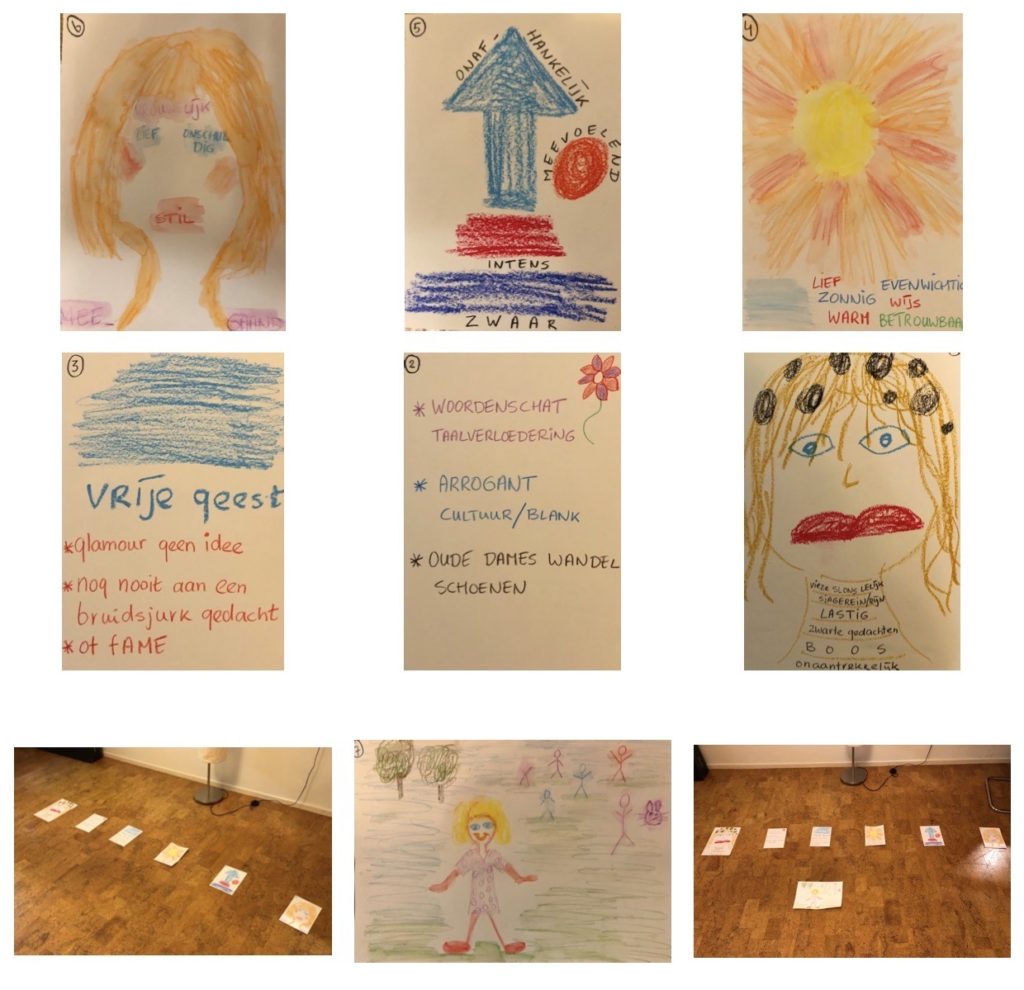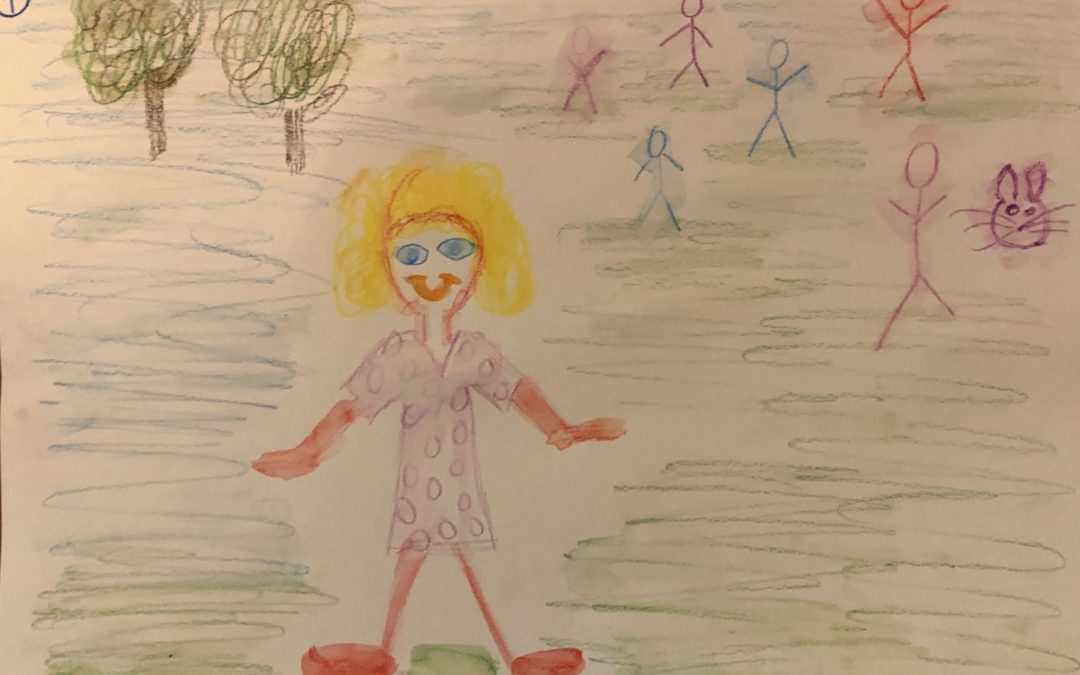The conscious and direct use of the ideal model technique means that the client visualizes himself/herself as possessing those qualities which he/she considers it good or necessary to develop and put them into practice. to build in itself. It is not a general model of perfection or of full psychosynthesis, but a model that represents the next and most necessary step or phase in counseling.
From: Psychosynthesis, A Collection of Basic Writings, Roberto Assagioli.
The ideal model
In the Psychosynthesis coaching, counseling or therapy, we use different techniques and methods that Assagioli describes in detail in his book Psychosynthesis. One of these techniques is the exercise with the Ideal Model. An exercise that, in my opinion, deserves some more attention. Probably ‘lack of time’ is one of the reasons why we don’t do this exercise with clients very often. Because if you really want this exercise to come into its own, it is important to take the necessary time for it.
Realistic and achievable
The ideal model is not about a model of perfection or a pursuit of perfection. It is about creating a realistic and attainable self-image. A self-image that can replace the many self-images that already exist in us. The self-images we have created over the course of our lives can often be one-sided, impractical or limiting. They have often become linked to parts of our personality that we have identified with. In psychosynthesis we call these parts ‘subpersonalities’. Parts that are often mutually exclusive and in conflict with each other. The technique of the Ideal Model helps us to develop a self-image that is realistic and achievable. Who we really are or want to become.
“When the Soul wants to experience something she throws out an image in front of her and then steps into it.”
Meister Eckhart
False self-images
In order to get to know yourself in who you really are or would like to be, you sometimes have to discover who or what you are not. Most of the time we have become so identified and familiar with our ‘false self-images’ that we have come to believe that we are. Peeling off these ‘false’ self-images can be very enlightening and at the same time confronting. Confronting, because it not only makes us aware but also responsible for our own creations. You learn to take responsibility for who you are and want to be. You learn to consciously choose with which self-image you want to connect and which qualities or psychological functions should be developed more or better. The act of will, as a guiding mechanism in our human actions, plays a crucial role in this!
Visualization
Recently I had the opportunity in practice to work through the exercise of the ideal model together with a client. With her permission I share some of the photos I took of the drawings. The exercise is a very creative process, which gives this technique its own dynamic. In addition to the use of language and our ability to think, the power of one’s own imagination and creativity is especially addressed. The exercise consists of working through 6 different self-images that the client will examine within himself. He or she is invited to imagine the self-images through visualization and express them on paper in words or images (shapes, colours, symbols).
(In consultation with clients, photos of setups or drawings are taken, stored in the online client file, which can then be accessed via the client’s own login.)
The power of the imagination
Images work in us; they are living forces that excite and evoke other forces according to the psychological laws………… Every image carries a motor element within itself.
From: The act of Will, , Roberto Assagioli.
Creativity
This creates a series of 6 drawings of ‘false self-images’, which is then concluded with a final drawing of the ideal image with which the client consciously wants to connect. An image that is realistic and achievable. Below you can see the series of a total of 7 drawings that my client was able to make during the session.

Influence on the Neurological and Hormonal system
The client explores these phases during the exercise with which she has identified. False self-images, images she created within herself or internalized from others. They are her own images and images of others, which she has mostly unconsciously adopted. And all these images contain a motor element that unconsciously drives our beliefs, our emotions and feelings and our behavior. And we are guided by this unconscious ‘feeding’ of external and internal stimuli, experiences, images, which are already active from our conception. Our organism (neuro-hormonal system) influences the development of our identity and personality and vice versa. We are a unit of innumerable processes that mutually influence each other. Many of the psychosynthesis methods and techniques that Assagioli described in detail in the last century are now supported and confirmed by research and science.
Neuroplasticity
So it is important to take care of not only our physical health but also our mental and mental health. Modern research shows that old patterns (neural networks) can be replaced by new patterns. (Neuroplasticity) And that’s hopeful. It confirms the enormous power and influence of the imagination and that the psychological laws as described by Assagioli in his work are just as real and powerful as the physiological laws. The brain is a pliable organ whose development and capacity for change continues uninterrupted for a lifetime. We are not prisoners of our genes or of our environment, which is a message of hope for anyone struggling or doubting the effects of trauma or other disruptions.
Psychosynthesis and the psychological laws
Law 1 Images or mental pictures and ideas tend to produce the corresponding physical conditions and outward actions.
Law 2 Postures, movements and actions tend to evoke similar images; these in turn (according to the following law) evoke and expire corresponding emotions and feelings.
Law 3 Ideas and images tend to arouse emotions and feelings corresponding to them.
Law 4 Emotions and impressions tend to generate ideas and images that correspond to or are related to them.
Law 5 Needs, incentives, motivations and desires tend to generate images, ideas and emotions that correspond to them.
Law 6 Attention, interest, reinforcements and repetitions elapse the images, ideas and psychological formations to which they are directed.
Law 7 Repetition of actions intensifies the incentive for further repetition and makes their execution easier and better, until finally they are carried out unconsciously
Law 8 All the different functions and their numerous combinations in complexes and subpersonalities follow paths to achieve their goals without our realizing it, and do so independently and even against our will.
Law 9 Drives, drives, desires and emotions tend to express themselves and demand to be expressed.
Law 10 The psychic energies can be expressed (1) directly (discharge catharsis); (2) indirectly, through symbolic activity; (3) through a process of transformation.
From: The act of Will, Roberto Assagioli.
The ideal model
The last drawing the client made in this exercise is a representation of the ideal model she would like. An image that is desirable, realistic and achievable for her. She drew an image that reflects her desire to live less from her head and more with both feet on the ground. In the drawing she expressed her need and desire for more contact with nature and the animals. After discussing the exercise, she said that she has a strong desire to feel stronger in connecting with others. That she would like to let some come a little closer and perhaps dare to keep others a little more at a distance.

What will be the next step in the counseling or therapy
As in the beginning has been mentioned is the exercise of the Ideal Model no general model of perfection or complete psycho synthesis, but a model that represents the next and most essential step or phase in the guidance. In the case of the client situation described above, the exercise is an important means of shaping the next steps in the counseling very concretely. The ideal model can also be a first step to give direction to a plan. The power of the client’s imagination can be used here as the ‘motor element’ which tends to be translated into action, according to the first psychological law.
Working with the ideal model individually
It is important to be able to take the time for this exercise to work calmly and attentively through the different phases of the exercise. In consultation with the client, it can then be decided to plan extra time. It is also possible to schedule a separate appointment via the online agenda of the practice for working through the Ideal Model together. In this session, which can be booked separately, you conclude the exercise with a concrete follow-up step that you want to make based on your ideal model in order to convert your own imagination into decisiveness. Check the online agenda to make an appointment.
Didactic Psychosynthesis
On the use of this technique in the context of ‘Didactical Psychosynthesis’, Assagioli writes the following:
“We want to emphasize that it is a fundamental principle of psychosynthesis to teach the client the techniques, and to encourage him/her to use them independently as soon and as often as possible.”
From: Psychosynthese, Veelzijdige benadering van heel de mens, Roberto Assagioli.
Working with the ideal model in a group
Do you want to experience this exercise together in a small group with a maximum of 5 people? That is also possible! Doing this exercise together is a very valuable experience where you can share this experience of working with the imagination with others in a creative way. Feel free and welcome in the psychosynthesis practice Amsterdam to schedule an appointment and finally take that step that helps you move from purpose to manifestation and enter your own ‘image’!
For both the individual appointment and for participating in a group with regard to working with the ideal model, you can use the reimbursement of your supplementary insurance as part of your guidance plan or as an independent consultation. Two dates are planned for working in a group:
Thursday 7 October and Thursday 18 November 2021 from 2 p.m. to 5 p.m. in the practice on the Lijnbaansgracht 67-0, Amsterdam. You can register immediately via the buttons below. Maximum 4 participants per group. Click on the dates to sign up for a group.
